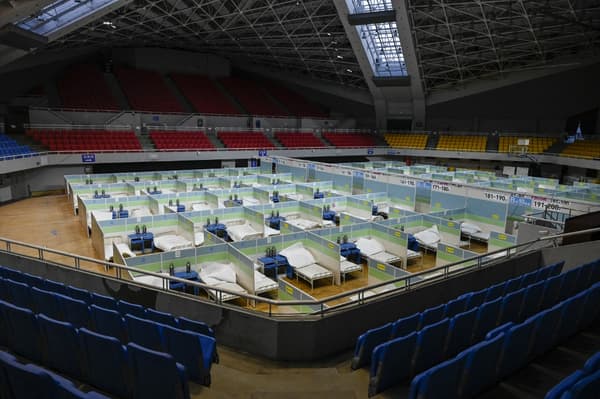More than three years after the first cases of Covid-19 appeared in Wuhan, in the east of the country, China is facing a new increase in Covid-19 cases. On social networks but also in the media, many testimonies speak of overloaded hospitals and crematoriums, forced to leave bodies lying on the ground.
Although no official statistics on this new epidemic wave have been transmitted by the Chinese authorities, anxious to maintain total opacity about the difficulties the country has encountered in its management of the pandemic, since the first deaths – vastly underestimated according to the experts- have been registered informed. Since the beginning of the week, seven deaths have been reported in Beijing.
Sudden lifting of measures to curb the epidemic
This new epidemic wave comes as the country abruptly lifted its very strict epidemic management policy in early December. Until then, people who tested positive had to isolate themselves in quarantine centers with more than summary comfort, and the Chinese were subject to a policy of mass screening.
Faced with a protest movement unprecedented since Tiananmen in 1989, caused in particular by the deaths of several people in a fire in Xinjiang, the Chinese authorities agreed to drop the ballast. People who test positive with mild symptoms can now stay home and the demanding screening policy has been removed.
Two provinces, Chongping and Zhejiang, assured that Covid-19 patients could even continue to go to work as long as they take “protective measures.” In the state media, the tone gradually changed to present the disease as a common infection.
Only 20% of those over the age of 80 are fully vaccinated
But this sudden relaxation comes as the Chinese population is poorly protected against the virus. First, because the sanitary conditions imposed on the Chinese for three years have exposed them little to the virus, limiting their collective immunity. Then, because the country’s vaccination coverage is limited. Only 65.8% of those over 80 received two doses of the vaccine, and only 20% three doses. And to top it off, the very effective messenger RNA vaccines are not authorized in the country.
The World Health Organization has also stressed that the recent explosion of cases is not only linked to the relaxation of measures, but to deeper causes. Faced with a virus that has become extremely contagious as it mutates, the rise in cases in China was noticeable even before the Chinese government’s policy change.
On the side of the hospital system, the rise in cases is worrying. The country’s hospitals are not proportioned for a population of 1.4 billion. There are only 4.5 intensive care beds for every 100,000 inhabitants, reports The expresscompared to 28.5 in Taiwan or 25.8 in the United States.

Leong Hoe Nam, a Singapore-based infectious disease expert, said the country’s hospitals are already too full to accommodate new patients, and medical professionals have underestimated the strength of this new wave. Chinese authorities have indicated that 106,000 doctors and 177,700 nurses will be redirected to intensive care units.
medicine shortage
The queues are never ending in front of pharmacies in Beijing, where everyone is trying to get covid medicines and self-tests, which are sorely lacking. Chen, a door-to-door delivery man, says, “You can’t buy fever medicine on online sales sites anymore. So I came to see this pharmacy.”
Several Chinese cities have rushed in recent days to set up makeshift hospitals, such as in Beijing, where a stadium has been turned into a hospital. The beds have been arranged in the center, separated by partitions. Fang Shimin, a Chinese writer and blogger followed by nearly a million people on Twitter, has been sharing videos on his account in recent days showing dilapidated hospitals with life-support patients, sometimes lying on the ground for lack of Of space.
Critical situation in the crematoriums
But it is in the country’s crematoriums where the situation is most serious. Here again, although no official communication mentions specific difficulties, alarming testimonies multiply.
An employee of a funeral home in Chongping says the death toll in recent days “is much higher than before.”
“We are all very busy, there is no place for the bodies in the cold rooms anymore,” he said.
In Beijing, “Obviously we’re busy, what place isn’t right now?” asks an undertaker. As for Canton, in the south of the country, a man denounces an “extremely worrying” situation. “We cremate more than 40 bodies a day compared to a dozen before. We are three to four times as busy as in previous years.”
Also on Twitter, Fang Shimin shared a video shot at a Chinese funeral home on Tuesday. Dozens of corpses wrapped in yellow or orange blankets are placed on the ground.
In the coming weeks, the situation is expected to worsen. The Lunar New Year, scheduled for January, will take millions of Chinese on a journey, eager to celebrate this holiday with their families. A recently published study by three professors from the University of Hong Kong announces the possible death in the coming months of one million people.
Source: BFM TV

